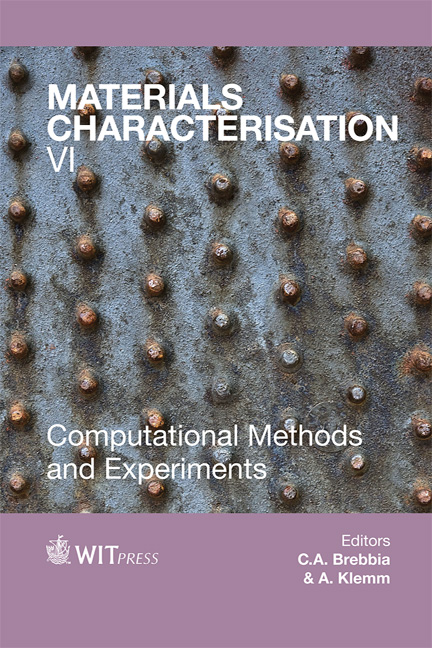A Microstructural Study On The High Temperature Oxidation, Carburation And Sulfidation Of HK 40 And Incoloy 802
Price
Free (open access)
Transaction
Volume
77
Pages
12
Page Range
41 - 52
Published
2013
Size
1,688 kb
Paper DOI
10.2495/MC130041
Copyright
WIT Press
Author(s)
I. Caminha, C. Barbosa, I. Abud, S. Santana de Carvalho, F. C. de Souza Coelho dos Santos & M. de Jesus Monteiro
Abstract
The main purpose of this article is an analysis of the microstructural changes in stainless steels and other special alloys due to high temperature phenomena, such as oxidation, carburization and sulfidation. These conditions arise in a plant during the production of polymeric materials, when the raw material, coke originating from petroleum, rich in carbon and sulfur, is in direct contact with tubes fabricated with metallic materials at elevated temperatures during the pyrolysis process. These changes can damage the characteristics and properties of the alloys, thus leading to premature failure in certain regions of the pipeline. In this work, techniques such as optical microscopy, field emission scanning electron microscopy (FESEM) equipped with an EDS microanalysis system and hardness tests were employed to analyze HK 40 stainless steel and Incoloy 802 used in pyrolysis tubes for polymeric material production. The presence of many undesirable oxide, carbide and sulfide particles and chromium depletion was identified mainly in the inner surface of the tubes in direct contact with the coke at elevated temperatures (around 1000ºC). Variations of the corrosive attack were observed along different positions in the pipeline, depending on the more or less extensive exposure to high temperatures and corrosive agents. It can be concluded that the degradation which led to the premature failure of the pipeline
Keywords
microstructure, microscopy, stainless steels, special alloys, high temperature degradation





